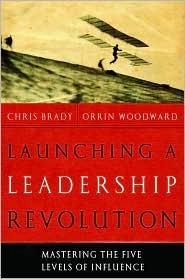What do you think?
Rate this book


288 pages, Hardcover
First published January 1, 2005
In the American Civil War, George B McClellan was twice made overall commander of the army of the Potomac, the major fighting force of the Union. Each time, he did a marvelous job of training the troops and bringing the discipline of a regular army to the rank and file, but he was incessantly unready to take action. On the rare occasions when he did confront the Confederate army, he outnumbered them by two-to-one or even three-to-one, but he always found ways to become convinced that the opposite was true. He complained unendingly to President Lincoln that he didn't have enough men, arms or supplies to conduct the proper campaign. McClellan suffered from an incorrect presupposition of leadership; he mistakenly thought leaders could demand and expect perfect situations before taking action. Reality for a leader is almost always a situation of lack and want. True leaders understand this and make do the best they can anyway. As the saying goes, "If you wait for all the lights to turn green before you set off on a cross-country trip, you'll never leave."